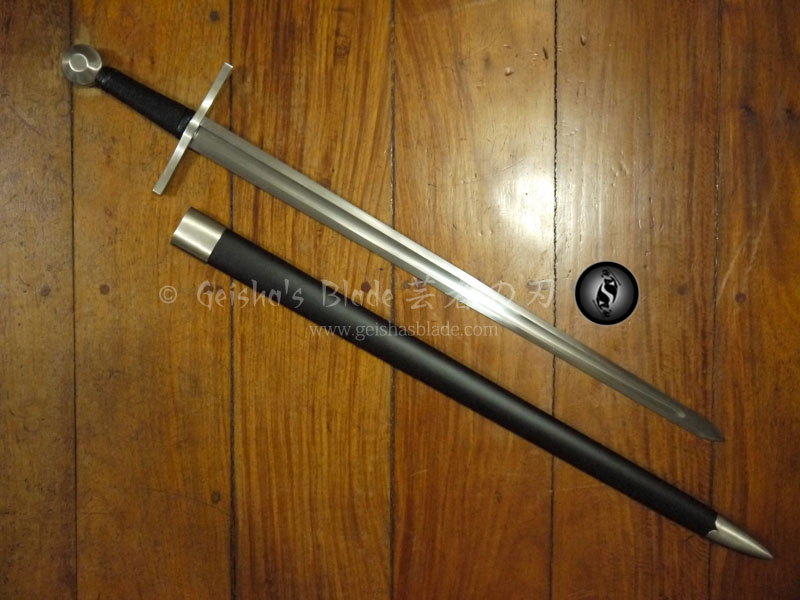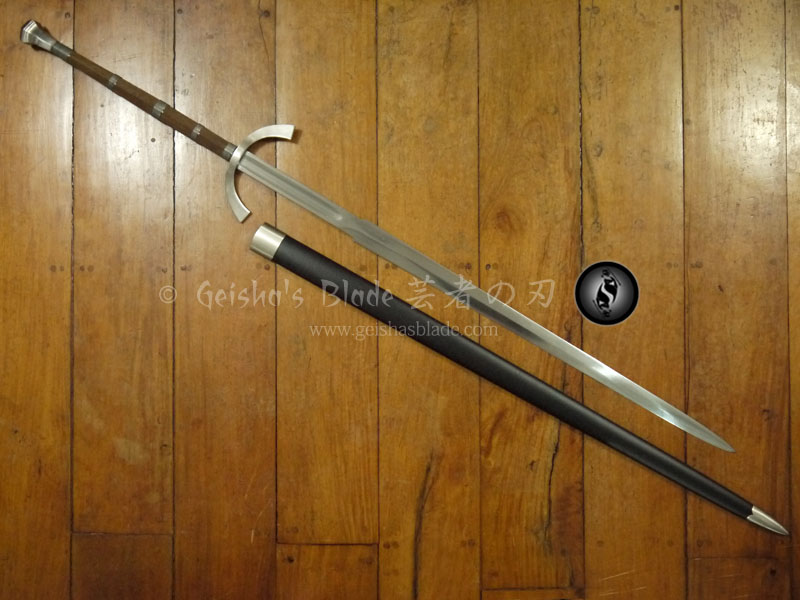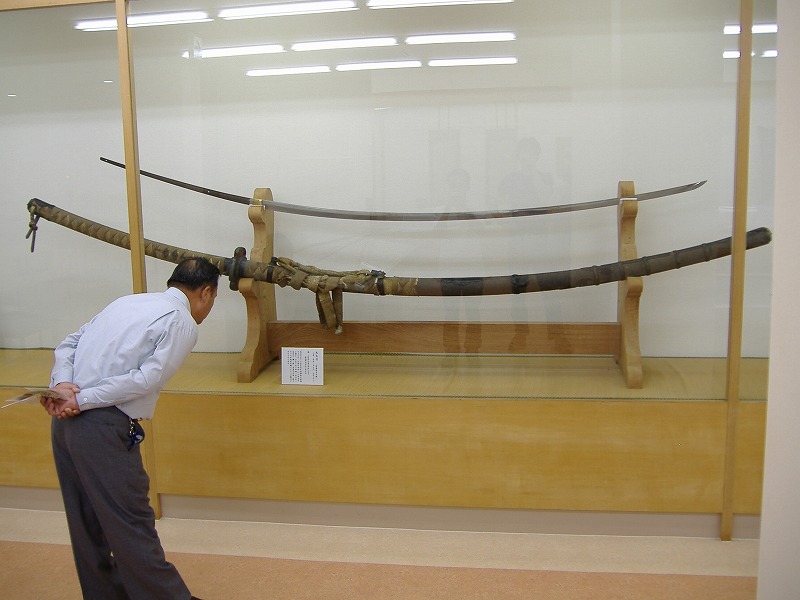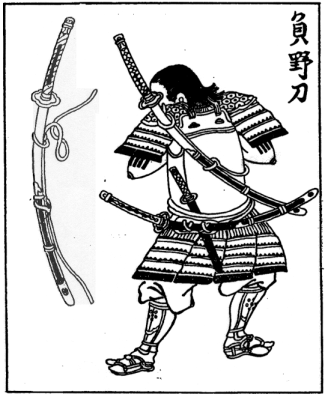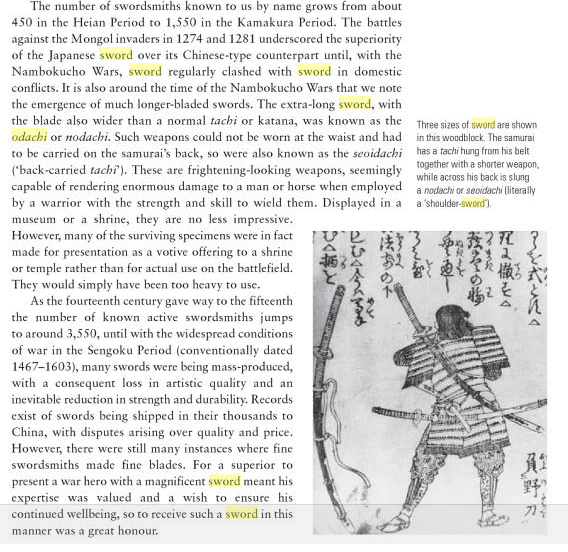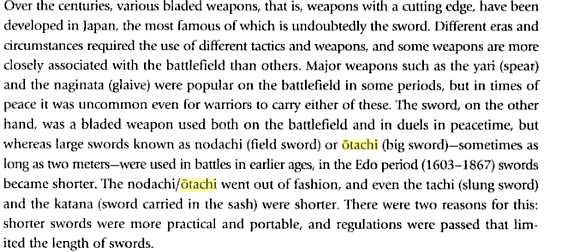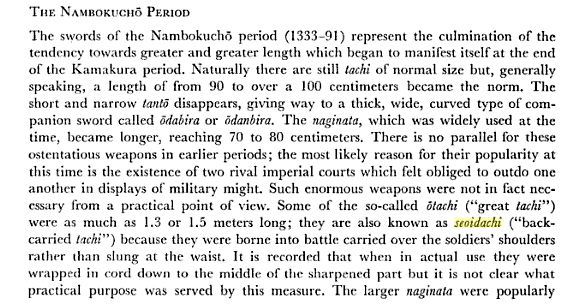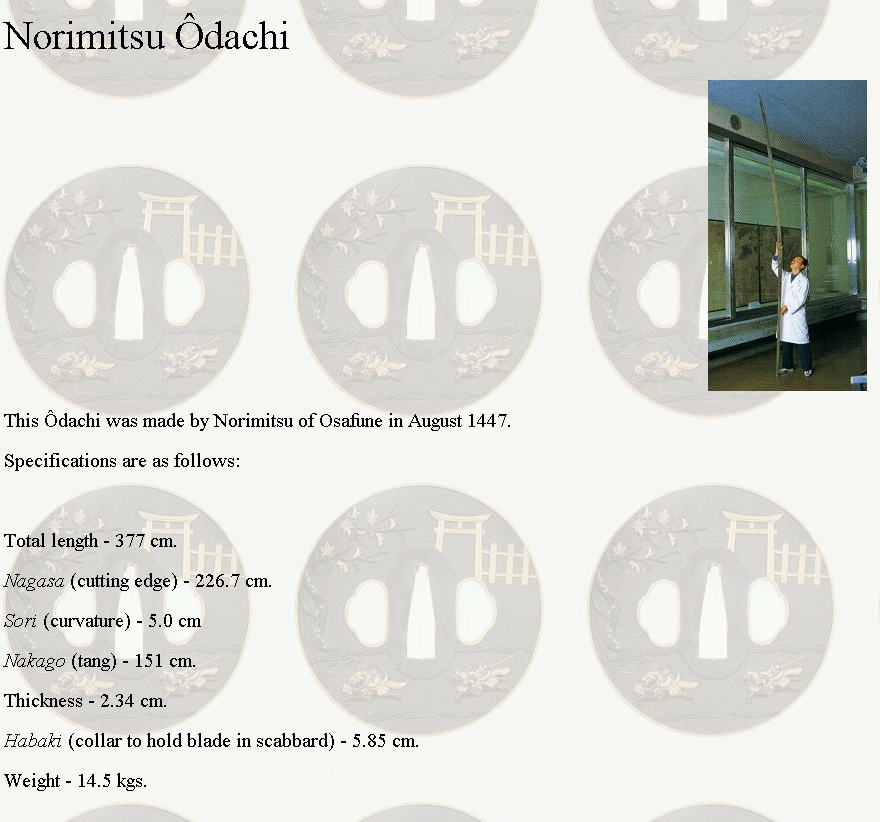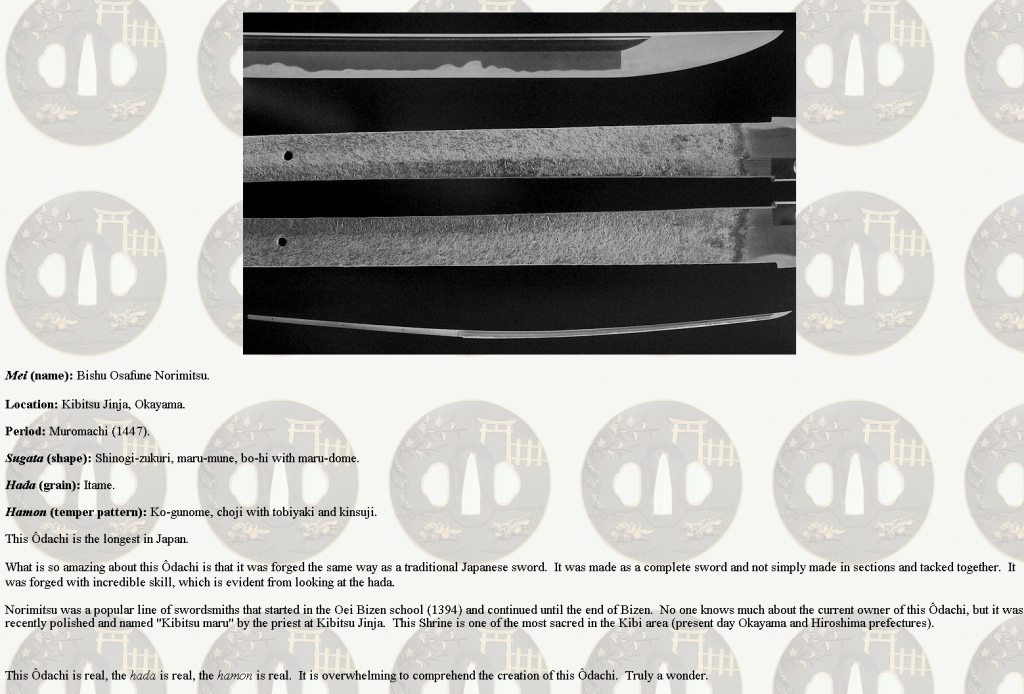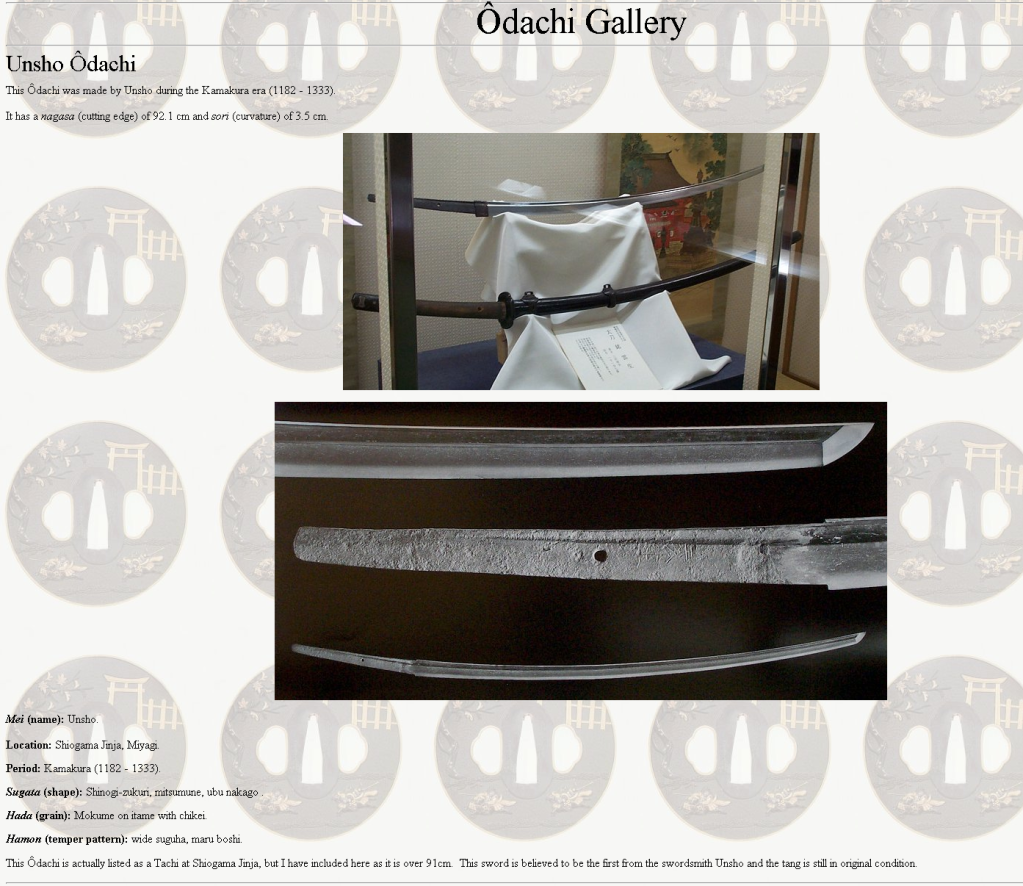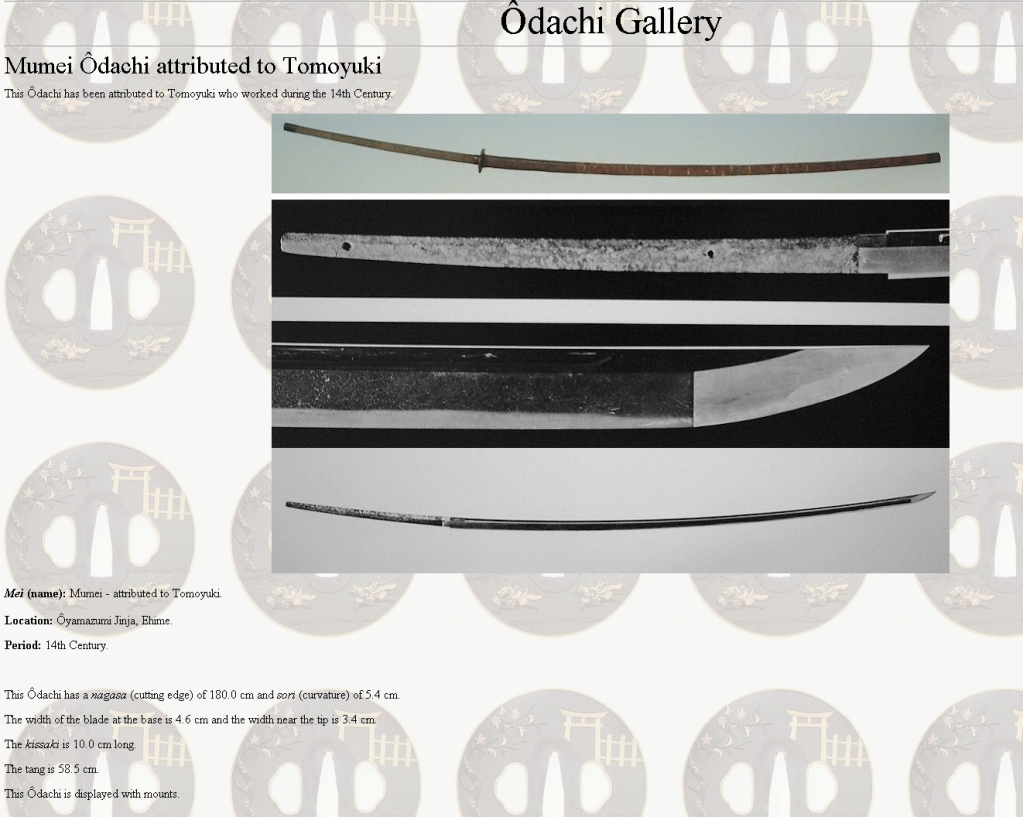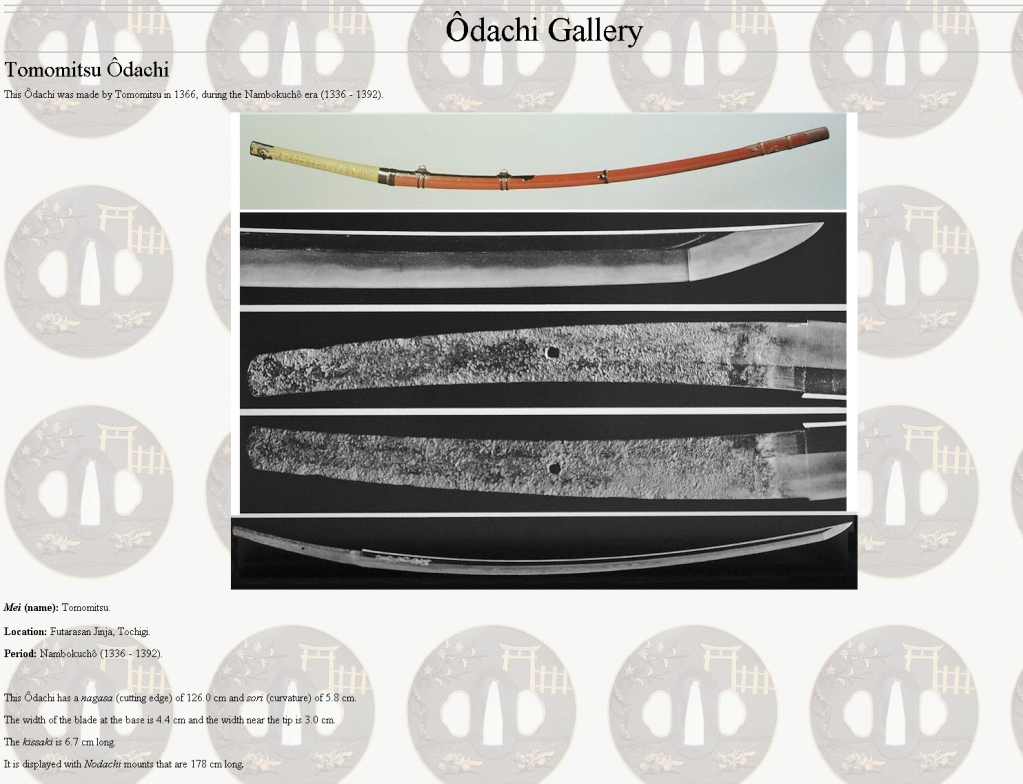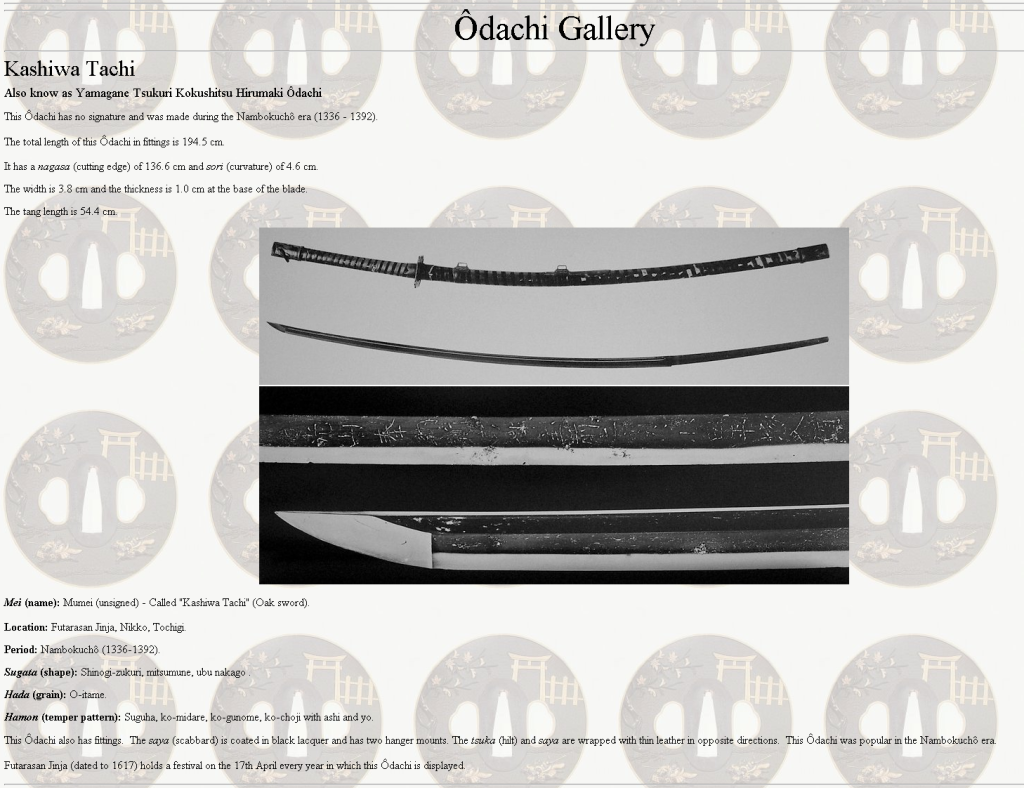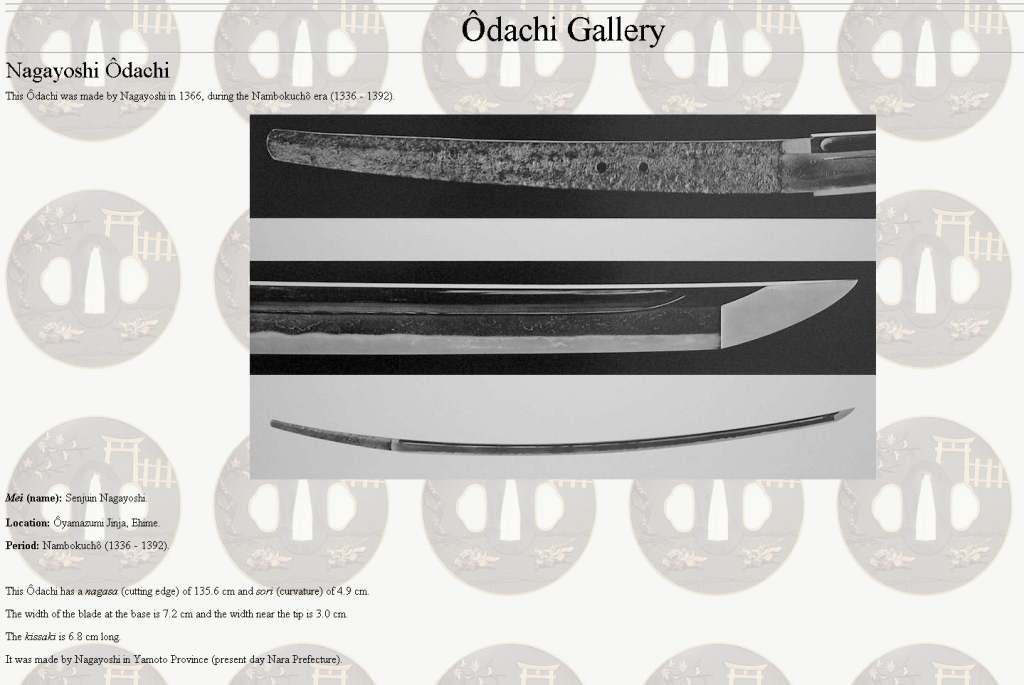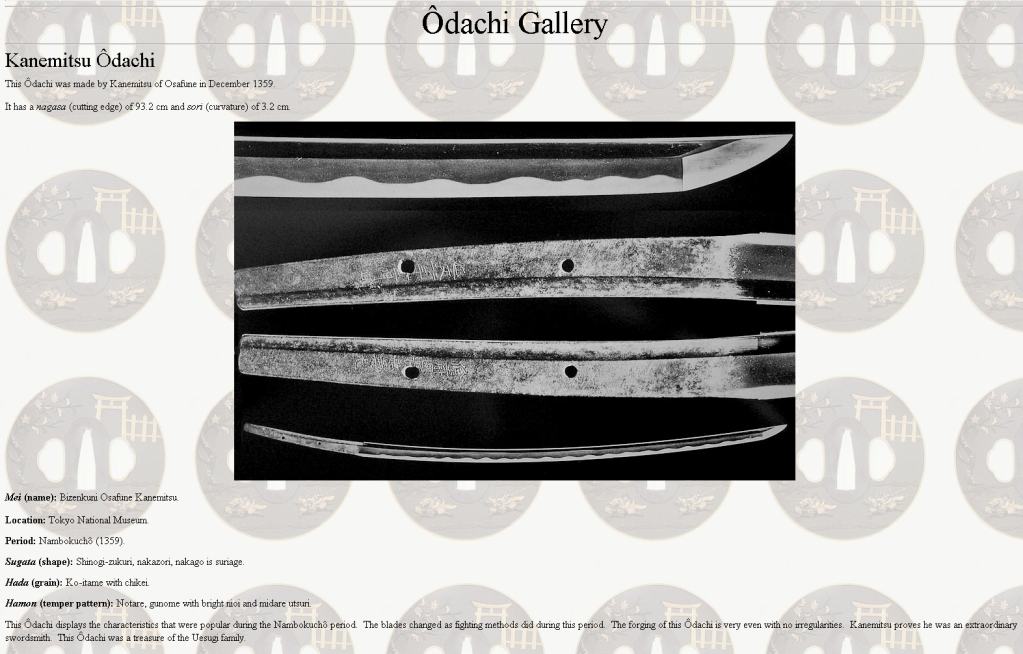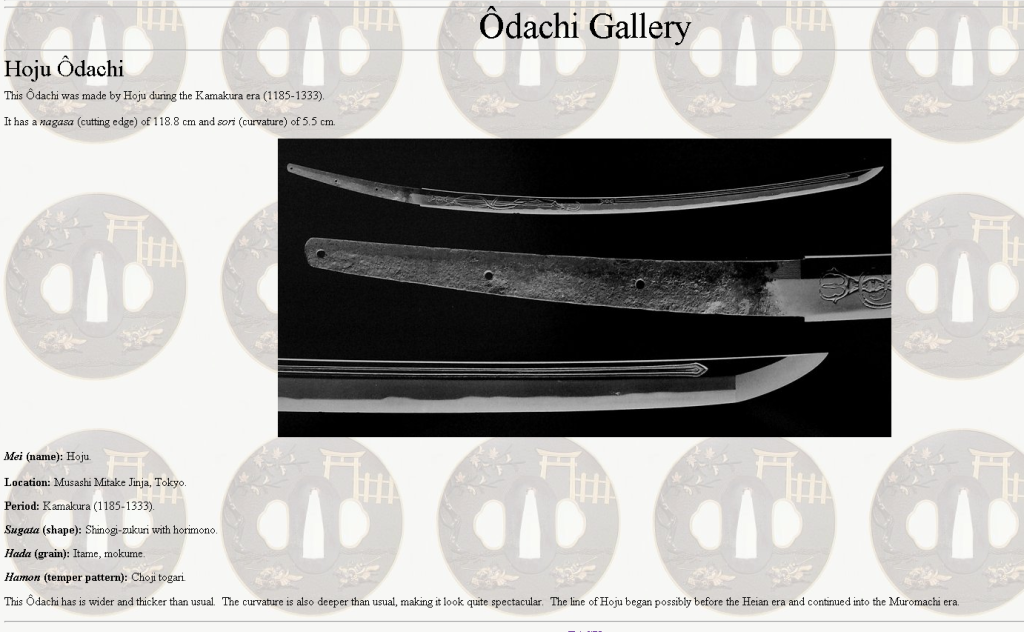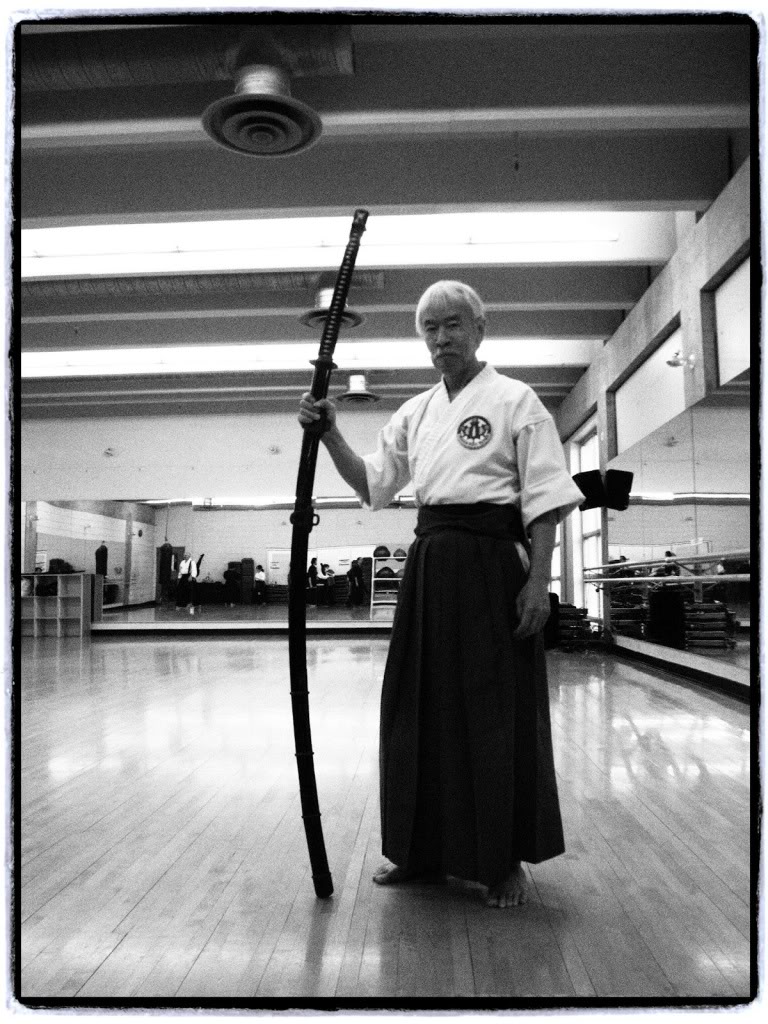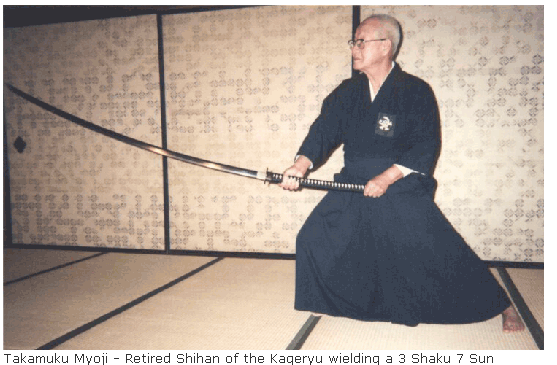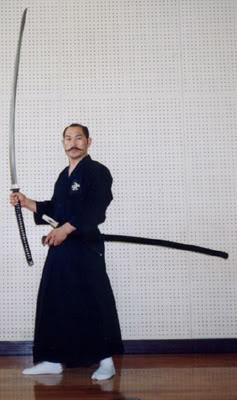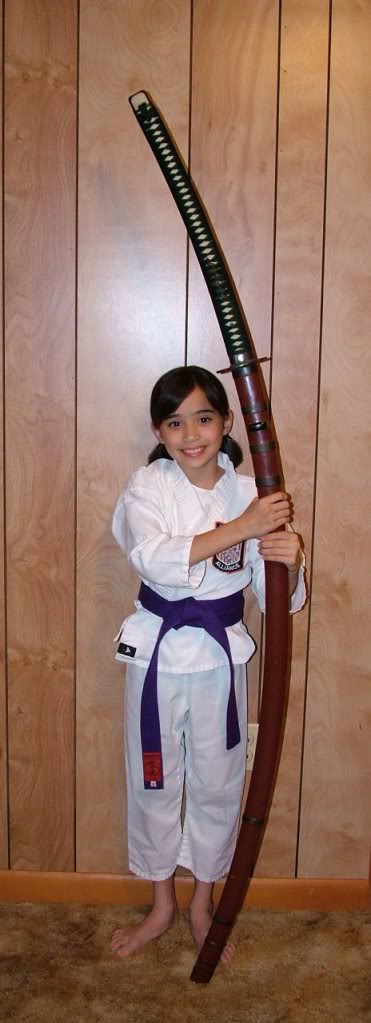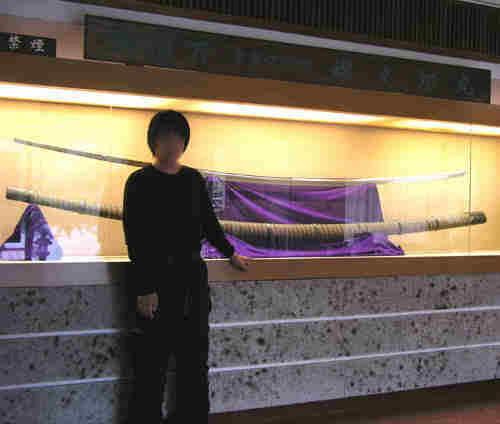There are differing opinions on whether odachi (large/great sword) and nodachi (field sword) are actually different names for the same type of sword or if there are two distinct extra large Japanese swords. I have gathered together as many images of these extra long swords as I could find, and there is an excellent gallery of images here.
From what I can see there is no clear difference between odachi and nodachi, as with many Japanese items there can be two or more names for the same type of sword. Stephen Turnbull and Kanzan Satō have a third name “seoidachi” (back carried sword) which seems to fit as these swords are to long to be worn in the conventional manner. To complicate things even more Serge Mol and Kanzan Satō use the term “otachi” (great tachi) rather than “odachi”.
From Guido Schiller: (“The Nodachi originates in the Heian period, where this term was used to describe a long sword used for fighting – to distinguish it from the Gijô-Tachi used by court nobles for mostly ceremonial reasons. Length wasn’t a determining factor. Even what we now call Kenukigata-Tachi was called “Nodachi” back then, and Gijô-Tachi is in current literature described as Kazari-Tachi (“decorative” Tachi). Today’s Tantô was the Koshigatana (“hip sword”) back then.
In the Nambokuchô period terminology changed again. Tachi became shorter for civilian use (Kodachi, what now would be classified as Wakizashi due to its length), and the Ôdachi with a cutting length of four, five and even six Shaku. They were also called Seoi-Nodachi (“Nodachi carried on the back”) or Nagadachi (“long Tachi”, what some scholars believe became the Nagamaki). These huge weapons were occasionally mounted in disposable scabbards. Very few of these great blades have survived in their original length since later generations cut them down to a convenient size. However, several votive offerings in temples and shrines remain; one excellent blade of six feet, made by Tomoyuki of Bungo, is in the collection of the Oyamazumi shrine and has been designated a national treasure.
With the advent of the Uchigatana a kind of “standardization” took place, and long swords were either named simply Tachi or Katana, medium swords Wakizashi and daggers Tantô. When we say “Nodachi” we actually mean the “Ôdachi”, but the former term is more widely used.
(On-yomi in caps) “Tachi” is made up from the characters TAI/TA/futo(i) = thick, fat & TÔ/katana = sword, knife; the reading CHI is an exception and usually not found in dictionaries.
The YA/no in “Nodachi” means “wild”, and the DAI/TAI/ô(kii) in Ôdachi “big” – so “Nodachi” means literally “wild fat sword” .”)
Katana: The Samurai Sword By Stephen Turnbull
Classical Weaponry of Japan: Special Weapons and Tactics of the Martial Arts By Serge Mol
The Japanese Sword By Kanzan Sat0
Wielding an Odachi/Nodachi (start the video at 1:59)

